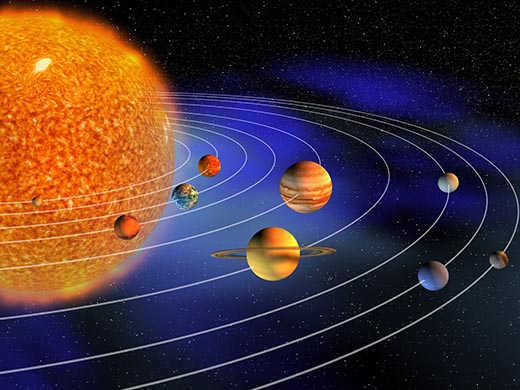
The Solar System consists of the Sun and a variety of celestial objects such as planets, meteorites, asteroids, and comets. These planets have different distances from the Sun, but they all orbit around it in unique paths. The Sun itself is much larger in mass compared to all other celestial bodies in the solar system combined.
Within the solar system, there are a total of eight planets, which can be classified into two groups: inner and outer planets.
The terrestrial planets
The planets in closest proximity to the Sun, namely Mercury, Venus, Earth, and Mars, are commonly referred to as the terrestrial planets. They are characterized by their solid surfaces and relatively small sizes. Mercury experiences extreme temperature fluctuations, freezing during its night and being scorched by the Sun’s rays during its day due to its proximity to the Sun.
Mercury holds the title for being the fastest-moving planet within our solar system. Venus, on the other hand, closely resembles Earth in terms of size and brightness but has a rocky desert landscape. The presence of thick clouds surrounding Venus makes it challenging to observe this planet.
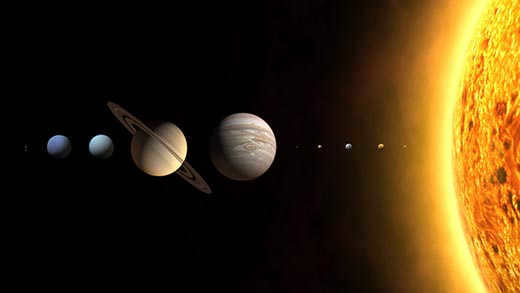
The Earth is the sole planet within our solar system that supports life. It resides at an optimal distance from the Sun, ensuring that it neither burns under the intensity of its rays nor freezes due to a lack of heat and light. Scientists posit that the Earth, like its planetary counterparts, originated from a cloud of gas and dust.
As its surface temperature dropped to five thousand degrees, the planet began to cool, resulting in the formation of a solid rock covering known as the Earth’s crust. However, closer to the Earth’s core, temperatures remain exceedingly high, occasionally giving rise to the eruption of hot lava from deep within the planet’s interior. The Earth is also unique in its possession of water, setting it apart from other planets in our solar system.
Colossal planets
The four massive planets – Jupiter, Saturn, Uranus, and Neptune – dwarf the inner planets in terms of size and mass. To illustrate, the contrast between Earth and Jupiter is vast, with Jupiter being ten times larger in diameter, three hundred times heavier in mass, and 1300 times greater in volume – clearly favoring Jupiter. The outermost planets in our solar system consist primarily of hydrogen and various other gases.

Neptune, the planet farthest from the Sun, was initially discovered through mathematical calculations before it was observed through a telescope. In 1989, Voyager 2 captured images of Neptune and its moon Triton.
Former member of the Solar System
At one time, there were nine planets in our Solar System, but this changed in 2006 when Pluto was reclassified as a “dwarf planet”.
This reclassification occurred because the International Astronomical Union revised the criteria for what qualifies as a planet. The new criteria included: orbiting the Sun, having enough mass to become spherical under the influence of its own gravity, and having a clear neighborhood in its orbit.
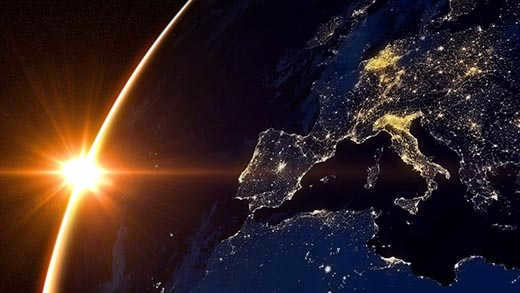
In order to be considered a planet, a celestial body must meet certain conditions. One of these conditions is that the planet should be a gravitational dominant, meaning there should be no other bodies of similar size nearby, except for its own satellites or other celestial bodies that fall under its gravitational influence.
However, Pluto fails to meet this third condition as its mass is only 0.07 of the mass of all objects in its orbit. This means that it was not a gravitational dominant and thus lost its planetary status.
Consequently, in September 2006, Pluto and Erida, along with Erida’s satellite Dysnomia, were classified as minor planets.
Many people believe that the knowledge learned in school is sufficient to answer the “childish” question of how many planets are in the Solar System. However, venerable scientists have been debating this topic for centuries.
Every planetary system is comprised of a star, which is orbited by planets and smaller natural objects such as dwarf planets, asteroids, and other space debris.
What constitutes a planet in the solar system?
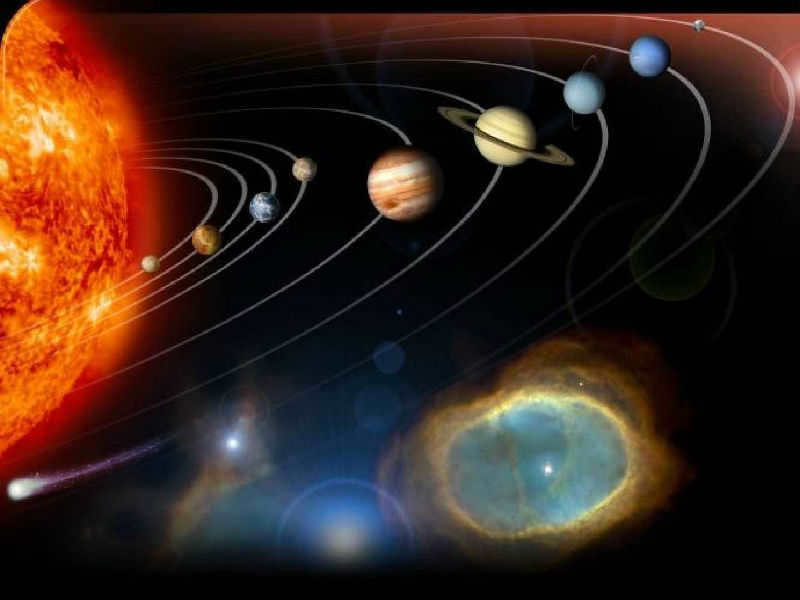
Throughout history, planets have had to meet specific criteria in order to be classified as such:
During the 19th century, astronomers identified eight planets in our solar system that met these criteria. This group can be further divided into two parts.
The first part consists of the four terrestrial planets known as the ‘Earth group’:
- Mercury, the swiftest planet, named after the Roman god of commerce;
- Venus, the radiant planet named after the Roman goddess of love, often referred to as the morning star;
- Earth, our habitable blue planet which is the largest of the rocky planets and has a natural satellite, the Moon;
- Mars, the red planet associated with the Roman god of war, known for its two satellites, Deimos and Phobos.
The outer region of our solar system, which is further away from the Sun, consists of four gas giants:
- Jupiter, the immense planet that was named after the Roman god of thunder. It is the second largest object in our solar system, after the Sun, and it has the highest number of satellites – 68;
- Saturn, the well-known planet with its iconic ring system and 63 satellites. It was named after the Roman god of agriculture;
- Uranus, the icy planet with its intricate ring system and 27 satellites. It was the first planet to be observed using a telescope and was named after the Roman god of the sky;
- Neptune, the planet that was discovered through calculations and named after the ancient Roman god of the sea.
There used to be a ninth planet, Pluto, which was discovered in 1930. Until 2006, when its planetary status was reclassified, students would confidently answer that there were nine planets orbiting the Sun.
However, there has been a recent revision to the concept of a “planet”. While the first condition remains the same, three additional conditions have been added. According to the new definition, a planet is now defined as a celestial body that:
- orbits around a star;
- possesses enough gravitational force to maintain a spherical or nearly spherical shape;
- does not have any large objects in close proximity to its orbit;
- is not a star itself.
The dwarf planet Pluto
Due to the requirement of dominant presence near its orbit, scientists have reclassified Pluto as a dwarf planet instead of a regular planet. Its dimensions, with a mass of 0.0021 times that of Earth and a diameter of 2305 km, make it suitable for inclusion in the category of dwarf planets. There are currently five known dwarf planets in the solar system, with Erida being the largest and slightly smaller than Pluto. The other dwarf planets include Haumea, Makemake, and Ceres. In addition, over 40 potential dwarf planets have been discovered, and astronomers estimate that there could be as many as 2,000 in total.
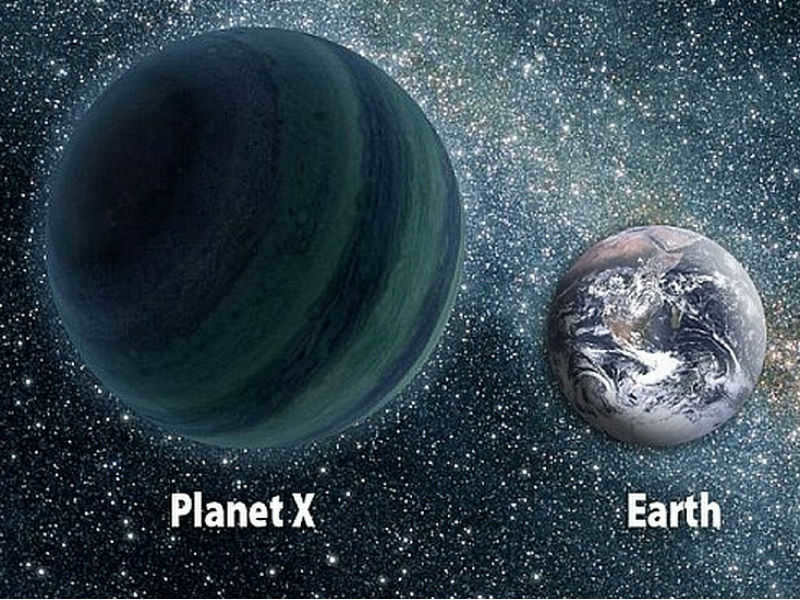
The quest for the ninth planet did not come to an end. In January 2016, an astonishing announcement was made about the existence of a mysterious massive celestial entity, comparable in size to Neptune, that was observed traversing a highly elongated orbit beyond the confines of Pluto’s orbit. This enigmatic object boasts a mass that is tenfold that of our own planet. Numerous astronomers view this enigma as a genuine contender for the esteemed position of the ninth planet.
Currently, in the solar system of the Sun, there are eight planets, but in the near future, the accurate response might be: “Nine!”
The successful exploration and conquest of space is a genuine triumph of the human intellect over nature. Vigorous research and development in this field commenced just a few decades ago, yet mankind has always held an interest in the cosmos, and the earliest scientific discoveries were made in ancient times. Presently, substantial knowledge exists regarding the planets within our solar system and their respective positions, although much still remains shrouded in mystery.
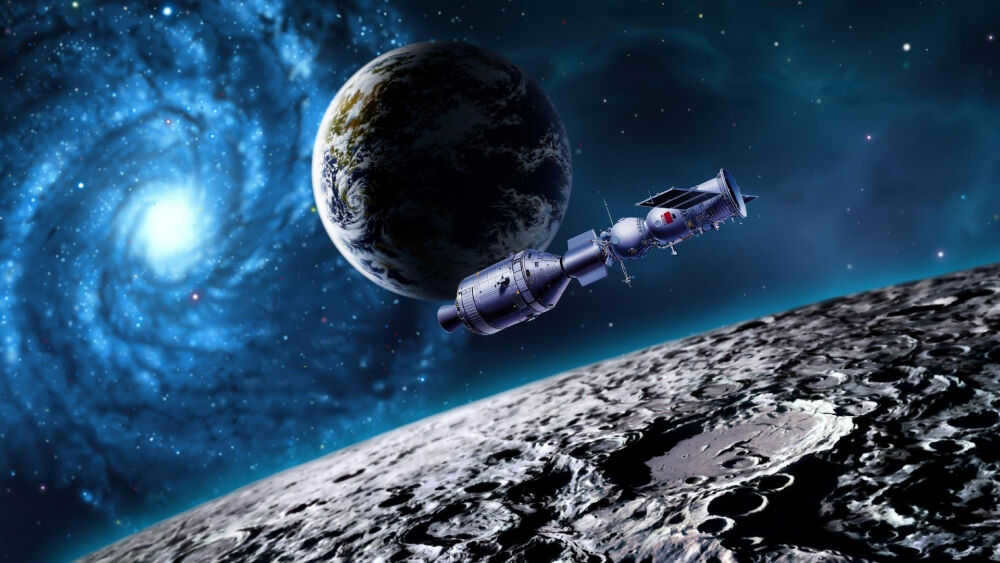

Exploring Outer Space
The exploration of outer space by humans has been a long-standing endeavor, dating back to the early recognition of constellations and their use for navigation and geographical orientation. This marked the beginning of astronomy as a scientific discipline. In the 16th and 17th centuries, the field of astronomy experienced significant advancements with the invention of the telescope, leading to the discovery of the Milky Way and other nebulae.
The spectroscope, a groundbreaking invention in the field of astronomy, has revolutionized scientific research. By refracting light through a prism, this device enables scientists to investigate the properties of celestial objects, including temperature, weight, and chemical composition.
The late 19th and early 20th centuries witnessed an extraordinary era of scientific advancements. During this period, a multitude of groundbreaking discoveries and achievements occurred, surpassing even the wildest dreams of previous generations. These accomplishments included manned space travel, moon landings, planetary missions, and the emergence of space tourism.
The continuous progress in this field, coupled with the development of powerful computer systems, provides hope for even more astonishing discoveries in the near future.
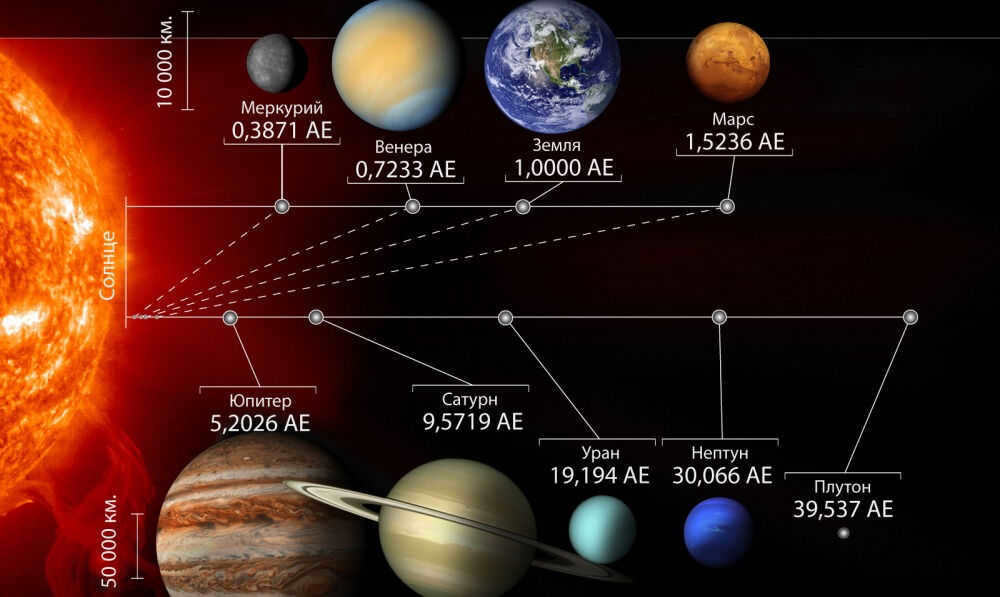
How many planets are there in the solar system?
The study of space is an ongoing and active pursuit, with modern scientific figures continually revising some of the postulates of astronomy. One such example is the number of planets in the solar system, which was traditionally believed to be nine until 2009.
The traditional system included the following planets:
However, American scientist Michael Brown proposed a revision to this theory. He redefined the term “planet” itself and introduced new criteria, which resulted in Pluto no longer meeting the definition of a planet due to its insufficient mass. According to the new criteria, a planet must dominate its orbit, whereas Pluto’s mass is only 0.07 times that of the mass centered in its orbit. Therefore, according to this revised theory, Pluto is considered to be merely a trans-Neptunian object.
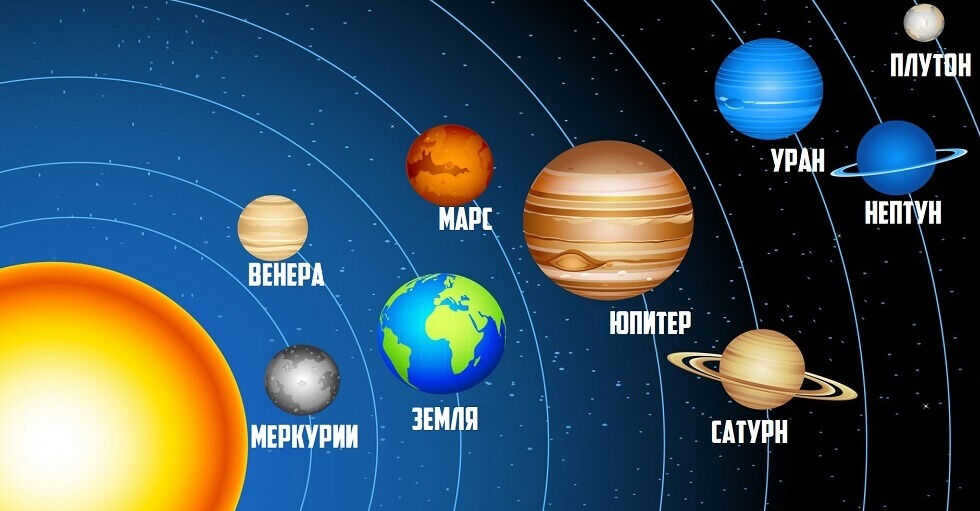

Movements of the Planets
It has been known for quite some time that the planets are in constant motion. However, this understanding has raised several inquiries: what is the specific pattern of the planets’ movements, how do they rotate, and at what speed do they travel.
Kepler’s First Law
German scientist Johannes Kepler demonstrated that planetary movement occurs in elliptical orbits, with the Sun located at one of the foci of the ellipse.
This principle became known as Kepler’s first law.
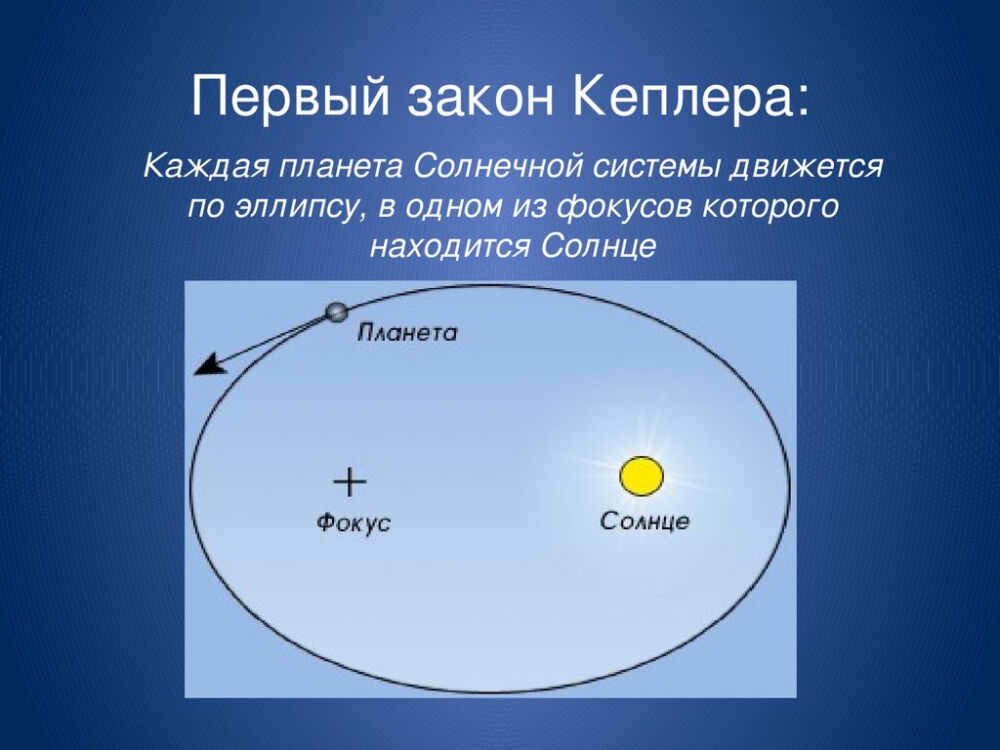
Rephrasing of Kepler’s Second Law
When a radius vector is drawn from the Sun, situated at one of the foci of the planet’s orbit, to the planet, it is observed that this vector covers equal distances in equal amounts of time.

Kepler’s Third Law
Each planetary orbit possesses a perihelion, which is the point closest to the Sun, and an aphelion, which is the point farthest from the Sun. The major axis of the orbit can be defined as the line segment that connects these two points.
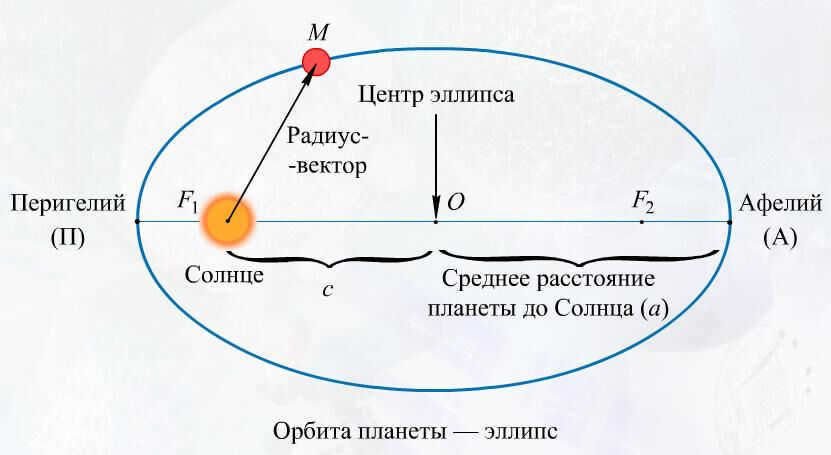
The statement of Kepler’s third law can be paraphrased as follows and can be expressed as a fraction:
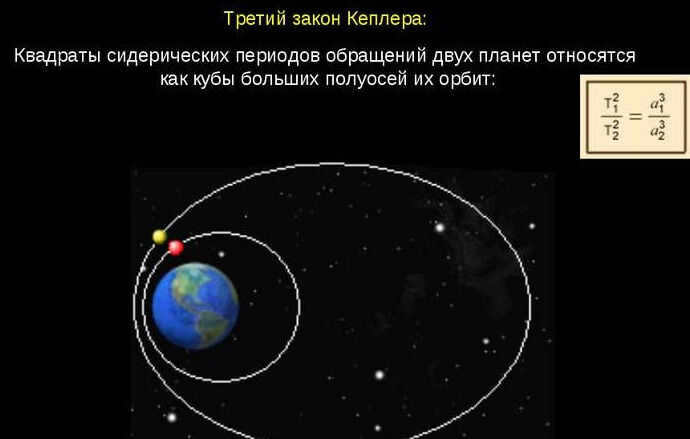

Kepler’s laws were highly precise during their era and held immense significance in the field of astronomy. Subsequently, Isaac Newton, after uncovering the law of universal gravitation, validated the aforementioned laws and provided theoretical reasoning to support them.
Our solar system consists of multiple planets, with Earth being one of them. There are a total of seven other planets in the solar system, arranged in sequential order from the star, the Sun.
Group of Earth
The planets belonging to the Earth group, also known as the inner planets, are the closest to the Sun.
This group consists of four planets:
These planets possess several unique characteristics that are specific to terrestrial bodies of this kind:
- They have either no satellites or only a few;
- They exhibit a weak magnetic field;
- Their orbits are located in close proximity to other planets in this group;
- They do not possess a ring system.
Aside from the aforementioned similarities, all planets belonging to this category share a common structure: they are comprised of rocks and dense metallic substances, and also possess a core (typically composed of iron) that is encased by a silicate rock mantle. These planets exhibit a varied terrain, featuring canyons, volcanoes, and precipices.
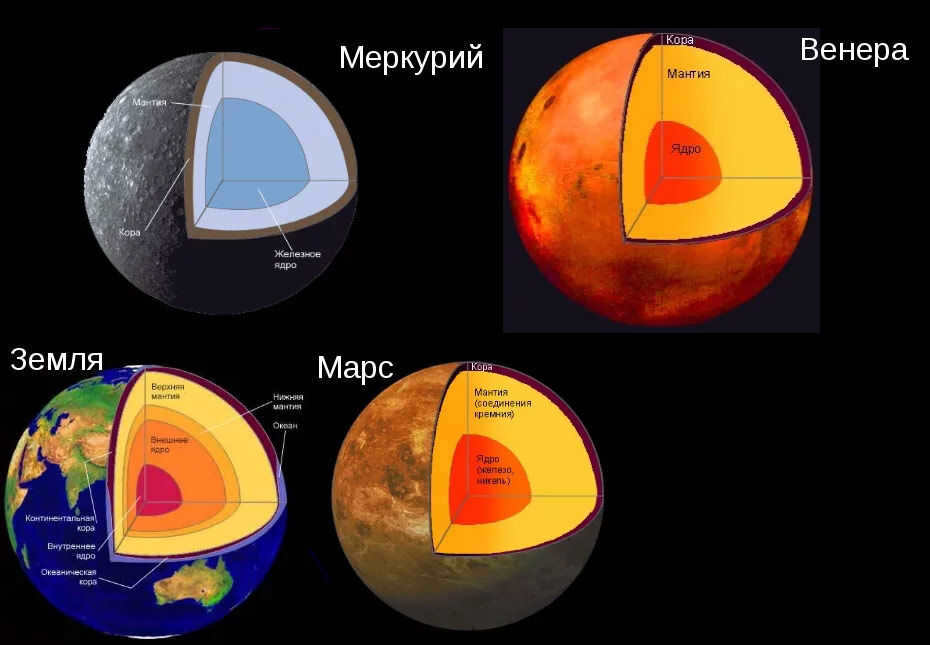
Planet Earth
Planet Earth is the largest celestial body in the Earth group, the third furthest from the sun, and possesses the highest density. It is fascinating to note that all the other celestial bodies in our solar system were named after gods, whereas the name of our blue planet translates from Latin as “soil”.
Planet Earth encompasses all the characteristics and properties of the other planets in its group as mentioned above, but it also holds its own uniqueness. Undoubtedly, the most significant feature of our planet is the presence of atmosphere and liquid water, which enables the possibility of sustaining life.
- The planet is accompanied by a single natural satellite – the moon.
- The distance between the Sun and the Earth measures 149,600,000 kilometers.
- The celestial body’s circumference is approximately 6378 kilometers, and its mass is around 5.9726-10 24 .
- The Earth completes one rotation in a period of 23 h 56 m 4,100 s days.
- The initial cosmic velocity is recorded at 7.91 km/sec.
Currently, the widely accepted theory regarding the formation of our planet is as follows: Earth came into existence 4.5 billion years ago as a result of a solar nebula.
The Earth’s biosphere has had a significant impact on the atmosphere, particularly by creating the ozone layer which shields the planet’s inhabitants from harmful solar radiation. The Earth’s crust is composed of lithospheric plates that constantly move, albeit at a very slow pace of approximately one centimeter per year, although there are regions where this movement occurs at a faster rate.

Mercury
Mercury is the smallest planet in the Earth group and has the highest speed of motion on the celestial sphere. It is challenging to observe Mercury due to its close proximity to the Sun, with a distance of approximately 58 million kilometers. The planet was named after the ancient Roman god of commerce, known for his activity and speed.
- Mercury has a radius of 2440 kilometers.
- Its approximate mass is 3.3022 x 10 23.
- The rotation period of Mercury is 58.46 days.
- The first space velocity of Mercury is 3.1 km/sec.
- Mercury does not have any satellites.
Mercury holds the second position in terms of density and is predominantly composed of rocks and heavy metals. One notable aspect of this planet is its relatively large core, which makes up about 70% of its total volume.
Mercury is known for its high number of craters, and its surface is characterized by numerous hills, rocks, and volcanoes. To date, the planet remains one of the least explored, with scientists obtaining the first image and map of its surface only in 2009.
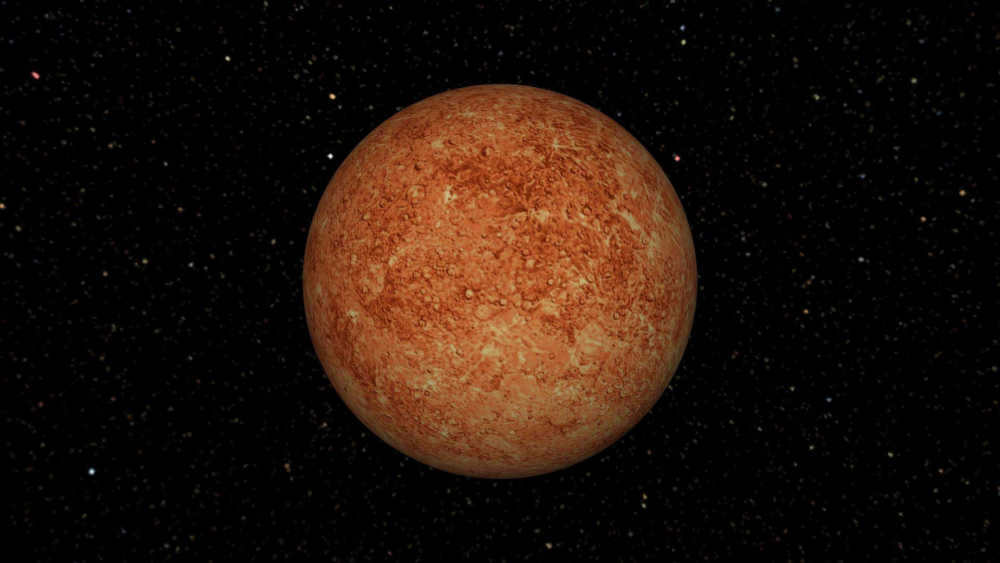

Venus
Venus is known as the hottest planet, with surface temperatures capable of reaching a scorching 462 degrees Celsius. It is the second planet furthest from the Sun. This celestial body has been observed by humans since ancient times, even before the field of astronomy was formally recognized as a science. Venus’ exceptional luminosity and its relatively close proximity to Earth make it visible to the naked eye in the night sky. The planet was aptly named after the ancient Roman goddess associated with love, fertility, and prosperity.
- Venus has a radius measuring 6051 kilometers.
- Its approximate mass is estimated at 4.86-10 24.
- Venus has a rotation period of 243.02 days.
- The first cosmic velocity of this planet is 7.328 kilometers/second.
- There are no artificial satellites orbiting Venus.
Venus shares many similarities with Earth, particularly in terms of surface characteristics. However, the intense atmospheric pressure on Venus has had certain effects on its surface. The topography of Venus is relatively smooth, with significantly fewer craters compared to Earth.
A fascinating detail is that Venus occasionally experiences retrograde rotation, meaning it rotates in the opposite direction. This phenomenon is believed to be the result of a previous collision between Venus and a massive asteroid.
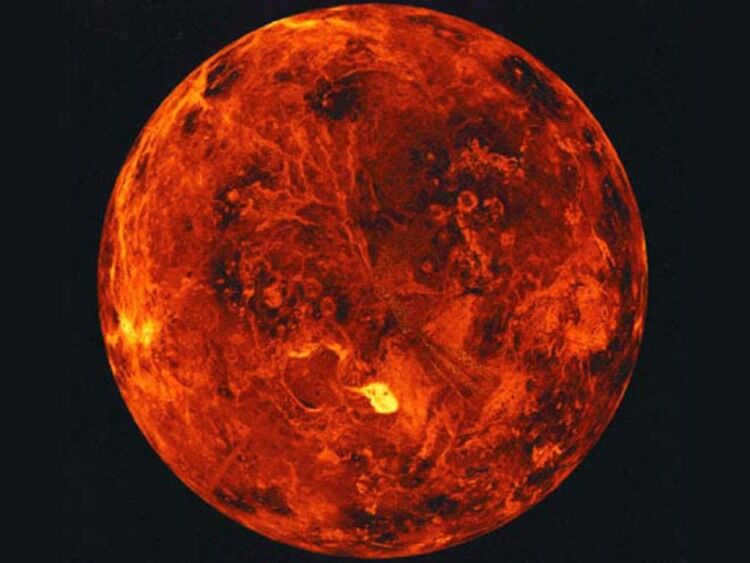

The Red Planet
Mars is the fourth planet from the Sun, and it received its name from the ancient Roman god of war due to its reddish appearance. Every few years, Mars comes close to Earth, so close that it can be observed with the naked eye. This occurrence, along with Mars’ menacing red hue, caused fear among ancient civilizations. However, this small planet poses no real threat, and its red color is actually due to the prevalence of iron oxide on its surface.
- Mars has a radius of 2,439 kilometers.
- It has an approximate mass of 3.33-10 23 .
- The rotation period of Mars is 58.46 days.
- Its first space velocity is 3.1 km/sec.
- Mars is orbited by two satellites, Phobos and Deimos.
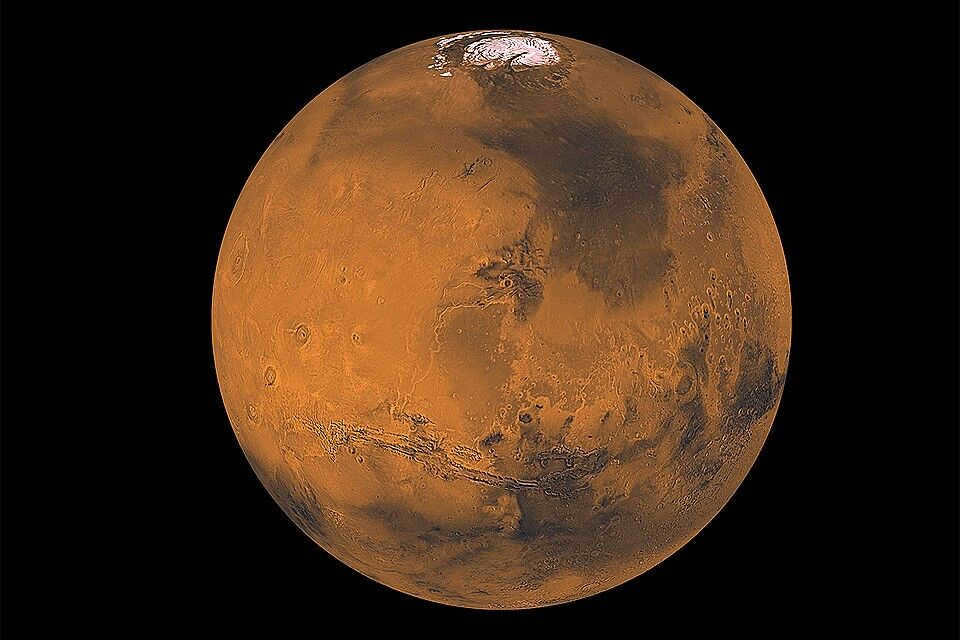
The Asteroid Belt – A Region Filled with Irregularly Shaped Objects
The region between Mars and Jupiter is commonly known as the Asteroid Belt. This area is home to numerous asteroids, which were first observed by astronomers in the early 19th century. Over time, it has become a well-studied phenomenon.
Within the asteroid belt, there are four major asteroids, often referred to as the main belt:
Ceres, the largest object in the main belt, is classified as a dwarf planet. It has a diameter of approximately 950 kilometers, while the other asteroids in this group have diameters not exceeding 600 kilometers.
Other objects within the asteroid belt vary greatly in size, with some being as small as space dust. However, their total number exceeds a million. Despite this vast number of objects, the asteroid belt is not considered to be completely filled.
Spacecraft can safely navigate through this region without encountering any asteroids, but collisions between celestial bodies happen here frequently (given the vast time scales of the universe).
Depending on the velocity of the asteroids, the outcome of these collisions can vary. High-speed collisions can result in the formation of an asteroid family from the fragments, while low-speed collisions can lead to the merger of two asteroids into a single body.

Asteroid Classification
The main belt asteroids are typically categorized based on their chemical composition.
Carbonaceous
These dark asteroids can only be observed in the sky with the aid of a telescope. As their name suggests, they are primarily composed of carbon, as well as minerals and rocks. Carbonaceous asteroids make up the majority of the main belt, accounting for about 75% of all objects. They are most prevalent at the outer edge of the belt, and their numbers decrease significantly as they move farther away from the Sun.
Silicate asteroids
The composition of these celestial bodies is comparable to that of stone meteorites, with silicon being the dominant element. They account for approximately 17% of the asteroid belt and are most densely concentrated at a distance of 2 astronomical units from the Sun. As the distance from the star increases, the number of silicate asteroids diminishes. These asteroids exhibit a moderate level of brightness and include a significant object known as Eunomia, which measures approximately 330 kilometers in width.
Iron asteroids
The largest group in the asteroid belt consists of iron and nickel. They have a moderate brightness and are believed to be the remnants of the metal cores of asteroids that broke apart due to impacts.

Enormous Planets
Enormous planets are celestial bodies of immense size that exist beyond the asteroid belt.
This group comprises four planets:
The magnitude of these entities is second only to that of the Sun. It is widely believed that these enormous planets safeguard their smaller counterparts within the system by shielding them from the constant bombardment of meteors and asteroids. Clearly, if our planet were subjected to such relentless space attacks, the existence of life on Earth would be called into question.
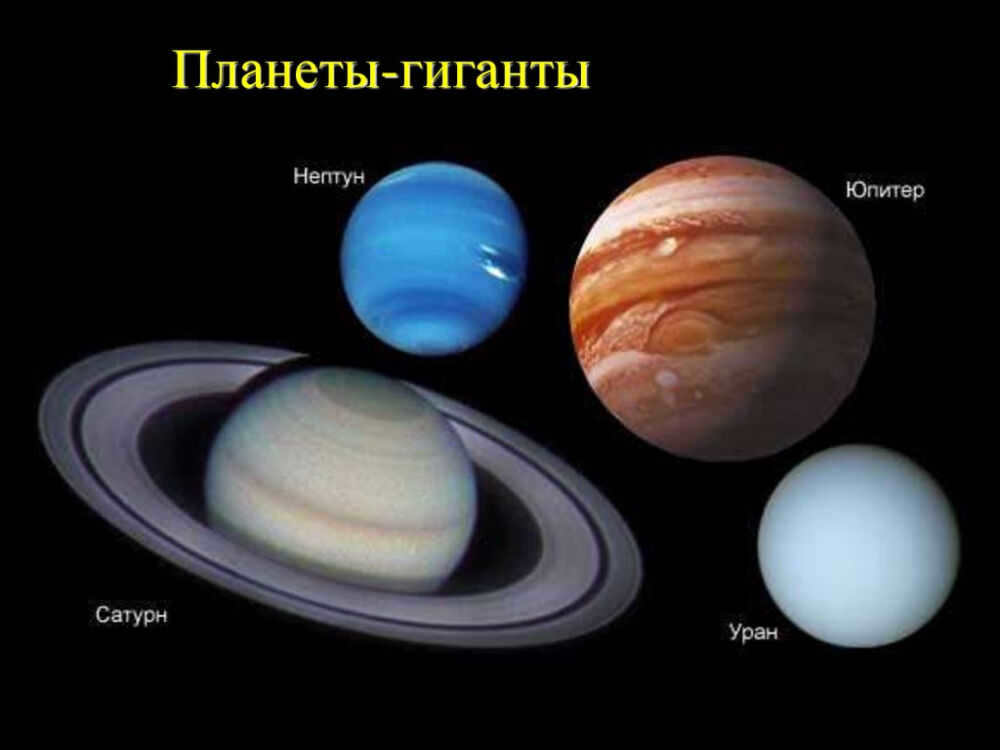
Jupiter
Jupiter is the largest planet in our solar system. It is even bigger than the Sun, which makes it the biggest object in the entire system. Scientists believe that Jupiter is continuously gaining mass by absorbing small particles, and there is a possibility that it could transform into a star or a sub-star known as a brown dwarf. Despite being dimmer than the Sun, Moon, and Venus, Jupiter can still be seen with the naked eye. In fact, humans discovered Jupiter’s existence over 400 years ago.
- Jupiter has a radius of 1.8981 x 10^27 kilometers.
- The approximate mass of Jupiter is 1.89 x 10^27 kilograms.
- Jupiter has a rotation period of 9.925 hours.
- The second space velocity of Jupiter is 59.5 km/s.
Jupiter is mainly composed of gas and liquid matter, with an atmospheric layer consisting of 90% hydrogen and helium. It also has an inner space and a solid core.
Jupiter possesses a total of 67 moons, with 4 of them being referred to as the Galilean satellites, named after the esteemed scientist who first observed them, Galileo Galilei. These four moons are Io, Europa, Ganymede, and Callisto.

The planetary climate is quite captivating: it frequently experiences incredibly powerful winds of up to 100 m/s, occasionally reaching speeds of 320 m/s. At the polar regions, occurrences resembling the aurora borealis on Earth are occasionally witnessed. These phenomena are triggered by the influence of Io, a moon of Jupiter that frequently experiences volcanic eruptions.

The planet Saturn
Saturn is positioned as the sixth furthest planet from the Sun and is a captivating celestial object in outer space. Despite its distance, it can be observed without the need for specialized instruments, which has led to human awareness of its existence for quite some time. Saturn is particularly captivating due to its distinctive rings, which are composed of a combination of ice and carbon dust. These rings stretch out for a staggering 120,000 kilometers.
- The planet’s radius measures around 60,268 ± 4 kilometers.
- Its approximate mass is estimated to be around 5.68-10 26 kilograms.
- The planet’s orbital period takes approximately 10 hours, 34 minutes, and 13 seconds, with a deviation of around 2 hours.
- The planet’s second space velocity measures approximately 35.5 km/s.
Saturn is primarily composed of hydrogen (85%) and other gases. An astonishing fact about Saturn is its remarkably low density, measuring around 0.687 g/cm 3 .
Saturn possesses a rocky core that is many times more potent than the core of our planet Earth.
Within its celestial realm, the gas giant is accompanied by a retinue of 18 satellites, with the most prominent ones being Titan, Japetus, Dione, Mimas, and Tefia.
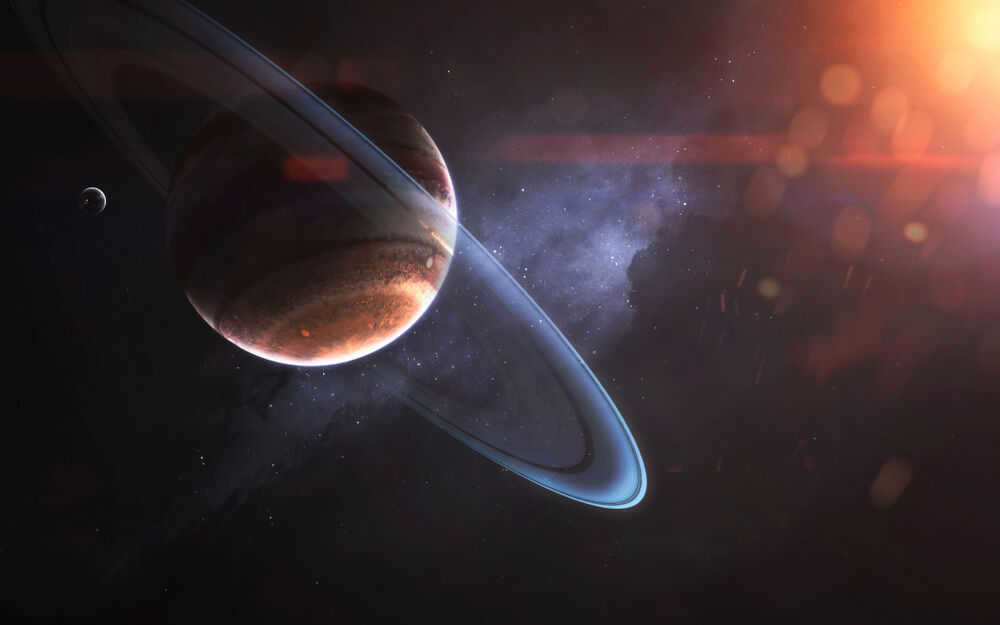

The Planet Uranus
Uranus, the third largest planet in size, is also the seventh farthest from the Sun in our solar system. Its composition is similar to that of other gas giants, with hydrogen making up the majority. However, Uranus has a unique icy core, covered by a layer of icy mantle. This unusual structure results in extremely low temperatures, reaching as low as -220 degrees Celsius.
- Uranus has a radius of 25,559 kilometers.
- The approximate mass of Uranus is 8.6832-10 25 .
- It has a rotation period of 0.71 days.
- The second space velocity of Uranus is 21.3 km/s .
This fascinating planet is accompanied by 28 satellites, all of which are named after characters from the works of William Shakespeare and Alexander Pope.
The biggest moons of Uranus are:

Neptune
Neptune, the outermost planet in the Solar System, is located at a distance that makes it challenging to observe without specialized equipment. As a result, humanity has only recently become aware of its existence. While Neptune’s radius is smaller than its neighbor Uranus, it surpasses it in terms of mass. The planet’s atmosphere primarily consists of hydrogen, helium, and methane gases. It is the methane that gives Neptune its distinctive blue color, as it absorbs red light. Deep within Neptune lies a rocky core.
- The planet has a radius of 24,764 kilometers.
- Its approximate mass is 1024 * 1026 kilograms.
- Neptune has a rotation period of 0.6653 days, equivalent to 15 hours, 57 minutes, and 59 seconds.
- The planet’s second space velocity is 23 km/s.
There are 14 moons orbiting Neptune, with the most well-known being Triton, a frigid celestial object that emits nitrogen particles from its subsurface.
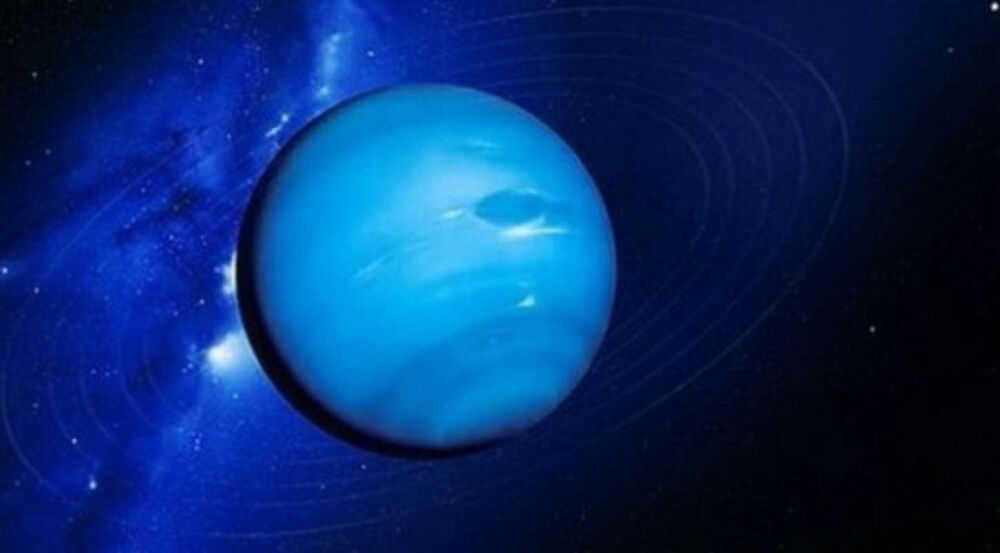
The impact of planets on life on Earth
Earth, the only planet known to support life, is interconnected with the rest of the cosmos, and various natural phenomena on Earth are influenced by the neighboring planets and the Sun.
Earth’s belts of light
One of the consequences of Earth’s orbit around the Sun is the formation of belts of light on the planet. In addition to the orbital motion, the tilt of Earth’s axis relative to its orbit plane affects the creation of these regions. The belts of light are characterized by the angle of the midday sun, the duration of daylight, and the climate conditions.
There are several belts of light:
- Tropics. The tropics are situated between the northern and southern tropics. In this region, the phenomenon known as the “sun at zenith” can be observed once a year at all latitudes. This phenomenon resembles a pendulum that swings between the tropics for six months in one direction and then six months in the other. The tropics experience high temperatures throughout the year, with the duration of day and night being approximately equal.
- Temperate Zones. The temperate zones are located between the tropics and the Arctic Circle. These zones have four distinct seasons: spring, summer, fall, and winter. During the summer, the Sun is positioned high above the horizon, while in winter, it is located low. As a result, the amount of sunlight received by the Earth’s surface varies throughout the year.
- Polar regions. These areas are situated at the Earth’s poles and are delimited by the polar circles. They are known for their consistently low temperatures throughout the year, as well as unique phenomena like the polar night and polar day. During the polar night, the Sun remains below the horizon, while the duration of the polar day and night progressively lengthens as one moves closer to the poles.
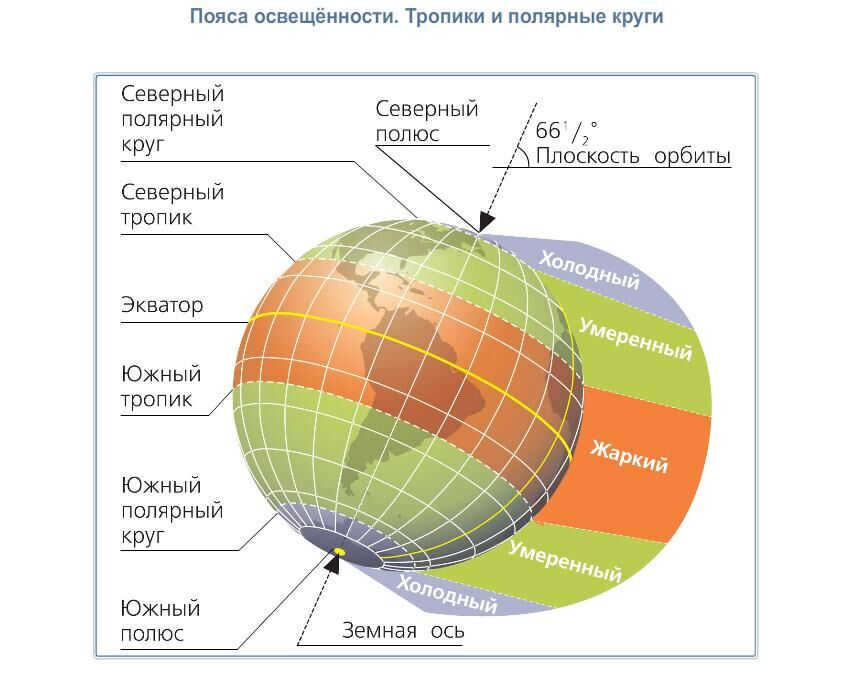

Origin and development
The current consensus in the scientific community is the acceptance of the nebular theory as the explanation for the formation of the solar system. According to this theory, the process of formation began approximately 4.6 million years ago. A massive molecular cloud experienced a gravitational collapse. The majority of the cloud remained at the center of the gravitational collapse, while the remaining portion transformed into a disk that eventually gave rise to planets and asteroids.
As a result of compression, the collisions between the particles of the disk became more frequent, leading to an increase in its temperature. When the temperature of the disk reached several thousand kelvin, it started to emit light – a protostar was born. The temperature of the disk continued to rise, and when it reached a million kelvin, a thermonuclear reaction between helium and hydrogen occurred. This caused the disk to transform into a regular star, while the denser areas of the outer regions of the disk formed planets that revolved around the star.
The cosmic space became populated with proplanets, estimated to be around 100-150 in number. Due to constant collisions and mergers between these objects, their quantity was constantly changing.

The likelihood of potential settlement
For a long time, humanity has contemplated potential relocation options beyond Earth. When discussing potential space colonization, Mars is often the first celestial body that comes to mind, as it exhibits several indicators that suggest the possibility of sustaining life. However, there exist other celestial objects that humans could theoretically inhabit.
The Moon of Jupiter, Europa
A significant number of researchers are certain that Europa contains evidence of living organisms and could potentially support human life as well. This celestial body is enveloped in a thick ice layer, suggesting the presence of liquid water beneath the surface.
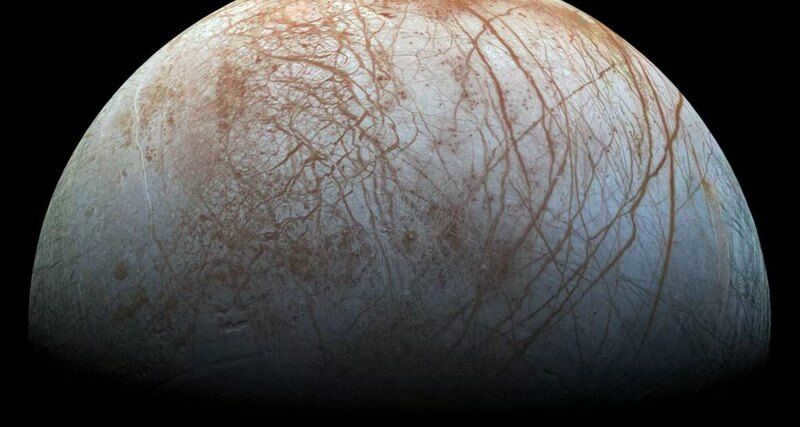

Titan
Titan, one of Saturn’s moons, is another potential candidate for colonization. While its atmosphere is not breathable, this challenge can be overcome with the use of specialized equipment. Additionally, the pressure on Titan is similar to that on Earth, making it more familiar for human habitation. The low temperature on the moon, which reaches as low as -128 degrees, poses another obstacle that colonizers would need to address by wearing specially designed clothing. However, Titan’s gravity, which is comparable to that of the moon, would make movement and walking relatively easy for settlers. These factors make Titan a promising option for future colonization efforts.
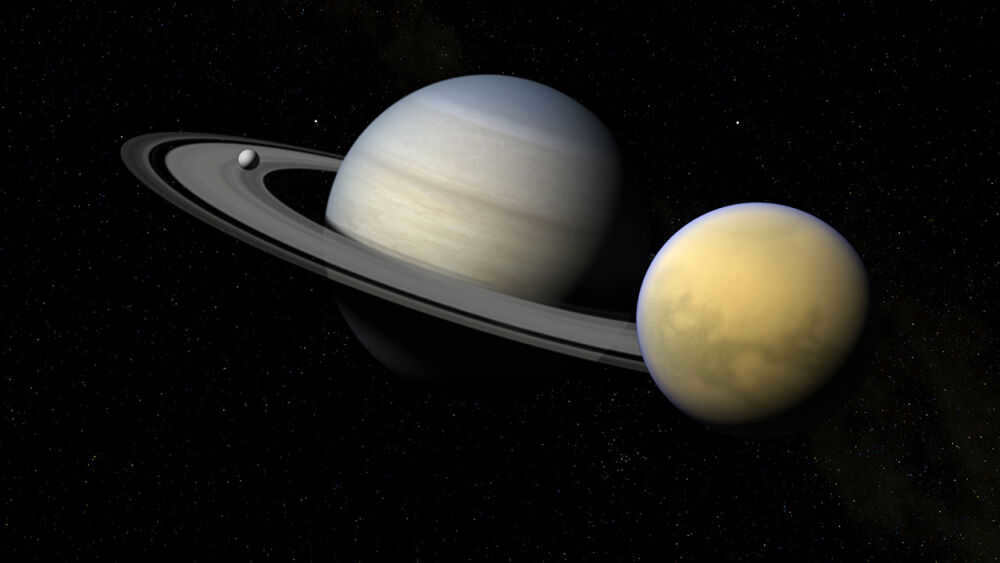
Miranda
The tiniest moon of Uranus could potentially serve as a fresh abode for humanity. Miranda’s terrain is characterized by numerous expansive gorges, making it a dependable refuge from potential hazards. Furthermore, Miranda’s ice composition and possible water sources further enhance its suitability. The moon’s exceptionally weak gravitational pull would grant humans unrestricted mobility.
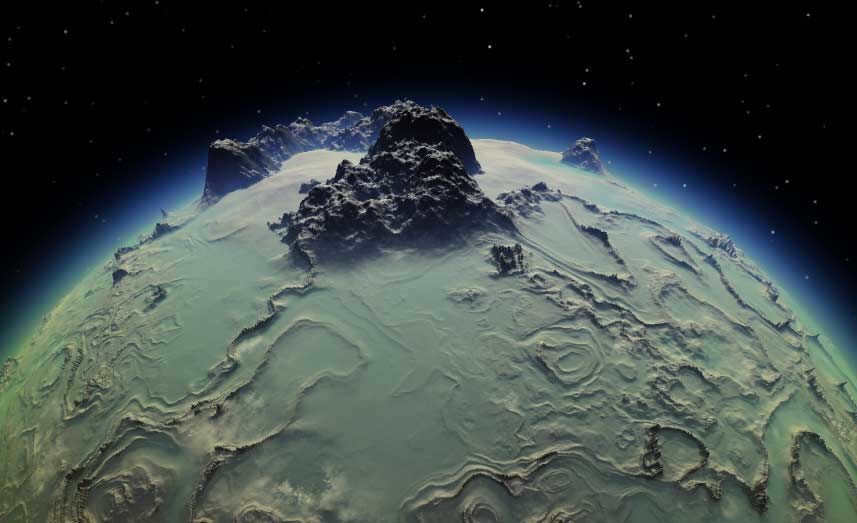

Enceladus
Scientists believe that there is a high likelihood of life existing on Enceladus, one of Saturn’s moons. This is due to the discovery of ice and the observation of geyser activity. Analysis of samples collected by space equipment revealed the presence of water, nitrogen, and organic carbon particles in the material ejected by the geysers. However, there are significant challenges to colonizing Enceladus, including its thin atmosphere and low gravity.
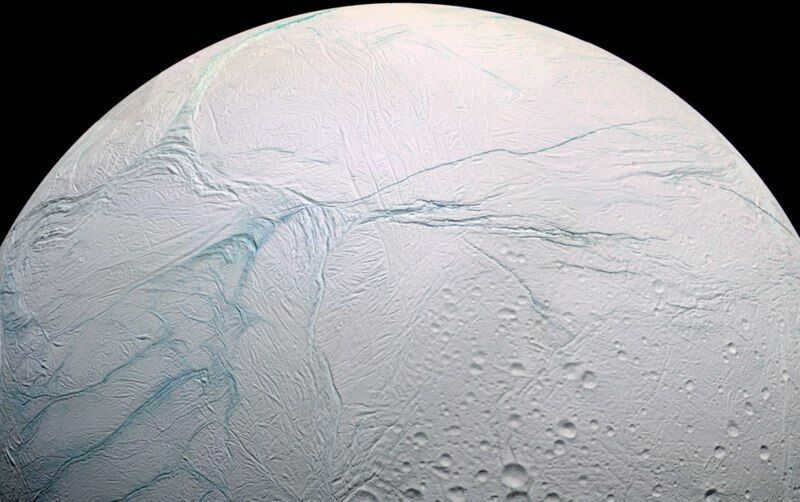

The Theory of Parallel Universes
The concept of parallel universes, also known as parallel worlds, may seem far-fetched, but it has a scientific basis and is supported by many. Hugh Everett, an American scientist, is credited with originating this extraordinary idea as a potential explanation for the quantum mystery that has puzzled physicists for years. The mystery revolves around the concept of quantum superposition, where a quantum object, such as an electron, can exist in two places simultaneously. Furthermore, attempting to relocate the electron results in an instantaneous “jump”.
According to Everett, the key lies within the observer themselves, who simultaneously exists in two different places and observes the electron from various perspectives. In simpler terms, there are two distinct parallel realities, and an observer, when transformed into a quantum entity, can exist within either one. Moreover, the number of potential realities is not limited to just two; it is contingent upon the potential outcomes of any given event, and these realities exist independently of one another. Subsequently, Everett amended his theory, suggesting that the Universe is singular but composed of multiple layers, with objects capable of occupying any of these layers.
It is important to note that, as of now, there is neither definitive proof nor disproof of the theory of parallel universes. The existence of this theory within the realm of science stems from its potential as one of the plausible explanations for the enigma of quantum mechanics.
There is an intriguing video about the Solar System.
Chapter 2: Bodies’ Interaction
§ 29. Gravity’s Impact on Other Planets. Physical Characteristics of the Planets
There are 8 immense planets orbiting the Sun (Fig. 70): the rocky planets Mercury, Venus, Earth, Mars, and the colossal planets Jupiter, Saturn, Uranus, and Neptune. All of them are gravitationally bound to the Sun. These gravitational forces are extraordinarily strong. For instance, between the Sun and the Earth, there exists a gravitational force of approximately 30,000,000,000,000,000,000,000,000,000,000,000,000,000,000 H = 3 – 10,22 N, or 3 – 10,19 kN. The significant numerical value of this force is a result of the Sun and Earth’s tremendous masses.
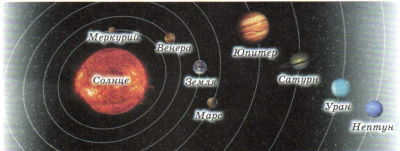
Mercury, one of the largest planets in the Solar System, has the smallest mass. Its mass is nearly 19 times smaller than that of Earth.
Jupiter, the largest planet in the solar system, has a mass 318 times greater than that of Earth. Many planets have satellites that are held close to them by gravitational forces. The Moon, Earth’s satellite, is the closest celestial body to us. On average, the distance between the Moon and Earth is 380,000 km. The Moon has a mass that is 81 times smaller than Earth’s mass.
As the mass of a planet decreases, the force it exerts on objects diminishes. On the Moon, the force of gravity is six times weaker than on Earth. For instance, a car weighing 600 kg on Earth would only weigh 1000 H (100 kg) on the Moon, instead of the 6000 N it weighs on Earth (Figure 71).
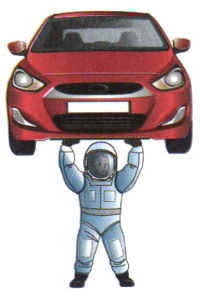
To depart from the Moon, objects would need a speed of 2.4 km/s, not 11 km/s like on Earth.
If someone were to touch down on Jupiter, which is significantly more massive than Earth, they would experience nearly triple the weight compared to on Earth.
In addition to the 8 major planets and their moons, there is a cluster of minuscule planets that orbit the Sun, known as asteroids. Even the largest of these planets, Ceres, is roughly 20 times smaller in size and 7500 times lighter than Earth. The gravitational force on these planets is so weak that a person, propelled off their surface, could easily soar away.

K. E. Tsiolkovsky (1857-1935) was a renowned Russian scientist and inventor who is widely regarded as the founding father of modern cosmonautics and rocket technology.
On the celestial body known as Vesta, a 30-meter jump would require the same amount of effort. To put this into perspective, that’s equivalent to jumping off a ten-story building or a towering pine tree. With such incredible leaping abilities, one could easily clear ditches and pits as wide as a river. In fact, it would be possible to effortlessly leap over 15-meter trees and even a house, all without the need for a running start.”
The exploration and study of outer space hold great significance in our understanding of various processes occurring on Earth. These include the emergence of magnetic storms, fog, smog, and climate change, among others. Therefore, the study of space plays a crucial role in comprehending the dynamics of our own planet.”
By examining and contrasting the properties of Earth and other celestial bodies, scientists are able to identify their shared physical characteristics. This enables them to make inferences about the origins and formation of the solar system. Consequently, the planets within the Earth group exhibit striking similarities; they possess relatively small sizes and masses, and their average density exceeds that of water by several magnitudes. Furthermore, these planets exhibit slow rotational speeds and typically possess a limited number of natural satellites. While Mercury and Venus lack any satellites, Mars has two minuscule companions, Phobos and Deimos, and Earth boasts a single sizable moon. One distinguishing characteristic of the Earth group planets is the presence of a lithosphere, yet only Earth possesses a hydrosphere.
That’s fascinating.
The Sun serves as the central celestial body within our solar system. It is responsible for providing light and heat, which are essential for the emergence of life on Earth. Additionally, the Sun’s energy has played a crucial role in the formation of various minerals such as oil, coal, and gas. Plasma, the fourth state of matter, is the primary form found in the Sun. Hydrogen and helium are the most abundant elements within this celestial body. Interestingly, helium was initially discovered on the Sun before its presence was identified on Earth, leading to its name.

Mercury is the nearest planet to the star. The majority of it is dominated by irregular raised land masses, there are plains filled with molten rock, and countless meteoric craters. On the side of the planet that faces the star, the temperature soars to 420°C. At this level of heat, tin and even zinc liquify. On the opposite side, the temperature drops below -173°C.

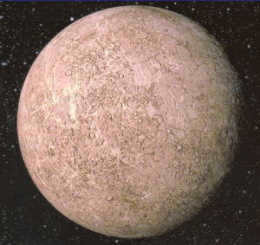
Venus, a celestial body of comparable size and mass to Earth, exhibits a unique rotational pattern opposite to that of Earth and other planets. Its axial tilt is nearly perpendicular to its orbital plane, resulting in equal sunlight exposure for both the northern and southern hemispheres. The surface of Venus showcases a diverse topography, encompassing hilly plains, plateaus, and mountain ranges towering up to an impressive height of 8 km.
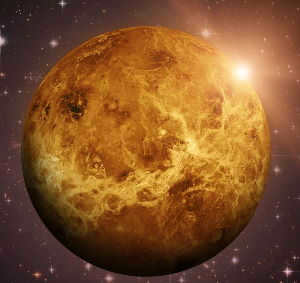
The Earth is positioned as the third planet from the Sun and revolves around it at a velocity of 30 km/s in an elliptical trajectory, while maintaining its axis parallel to itself. The Earth has an average density of 5.5 – 10 3 kg/m 3.
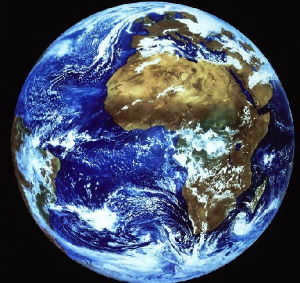
The Earth’s natural satellite, known as the Moon, acts as a reflector of sunlight and lacks a substantial atmosphere. The Moon experiences extreme temperatures, with the sunny side reaching temperatures over 130°C, while the opposite side plummets to -170°C. Its surface is characterized by a multitude of “seas,” “continents,” and craters. The hemisphere that is visible from Earth is primarily dominated by continents. The Moon takes approximately 27.3 days to complete a full revolution around the Earth, coinciding with its own rotation around its axis during the same time period.

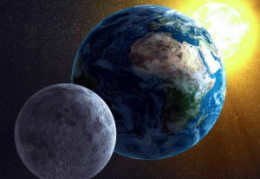
Mars is approximately half the size of Earth.
It shares many similarities with Earth in terms of atmospheric processes. The average temperature on Mars is -60°C, dropping to as low as -150°C at the poles (where carbon dioxide freezes into dry ice). There are significant water reserves trapped in the permafrost layer. The planet’s reddish hue is attributed to the presence of iron oxide.
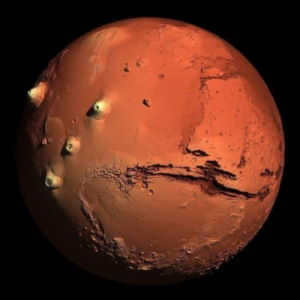
Jupiter, the largest planet in our solar system, boasts an average radius of approximately 70,000 km (which is 11 times the radius of the Earth). Furthermore, its volume is a staggering 1,300 times that of our home planet. In terms of mass, Jupiter is a behemoth, with 317 times the mass of Earth and 2.5 times the mass of all the other planets in the solar system combined. The gravitational pull on this massive celestial body is 2.5 times stronger than that on Earth, meaning that if an individual weighing 100 kg were to find themselves on Jupiter, their weight would be a whopping 250 kg.
Differentiating it from the terrestrial planets, Jupiter is essentially a gas giant, composed primarily of hydrogen and helium just like our Sun. With an incredibly frigid temperature of 140°C, this immense planet is also the fastest spinner in our solar system, completing one rotation on its axis every 10 hours.
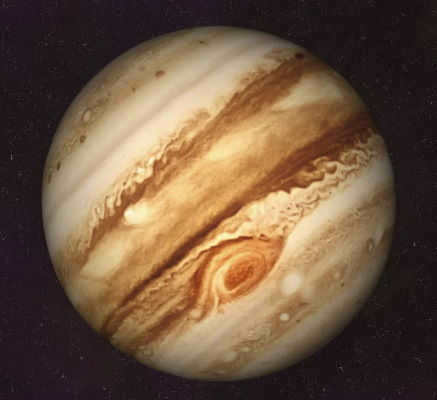
A comet is composed of three main parts: the head, nucleus, and tail. It orbits the Sun and has a mass that is approximately 10 -4 times that of Earth. The comet’s appearance undergoes changes as it gets closer to the Sun. The nucleus of the comet contains a concentrated mixture of frozen gases, dust particles, and metal particles. When a comet approaches the Sun, it heats up and releases gas and dust, creating a head and tail. Comets provide valuable insights into the characteristics of outer space.
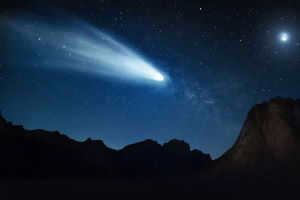
Meteorites are pieces of asteroids. There are two types of meteorites: iron meteorites, which are primarily made up of iron, and stone meteorites, which are similar to rocks found on Earth and contain oxygen, silicon, magnesium, and iron.
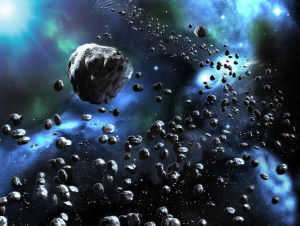
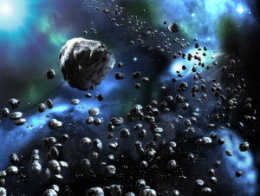
Mercury lacks an atmosphere, while Venus and Mars possess atmospheres primarily composed of carbon dioxide. The Earth-group planets are distinguished by their solid surfaces and numerous meteor craters.
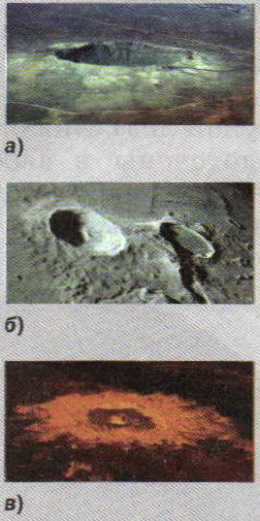
The massive planets possess considerable size and mass. They rotate at a high velocity around their axes. For instance, Jupiter completes one full revolution in nearly 10 hours. Due to their considerable distance from the Sun, these planets always maintain low temperatures (approximately -140°C). The massive planets are accompanied by a multitude of satellites and rings. The primary characteristic of the massive planets is the absence of solid surfaces.
All massive planets possess atmospheres primarily composed of molecular hydrogen, helium, methane, ammonia, water, and other substances. The massive planets possess substances that are also found on Earth and similar planets.
The examination of planets provides valuable insights for geology, meteorology, biology, and other scientific disciplines.
Questions:
1. What is the total number of planets orbiting the Sun?
2. Can you name the giant planets and the planets that belong to the Earth group?
3. Which forces are responsible for keeping satellites in orbit around planets?
4. How does the mass of a planet affect the gravitational force it exerts?
Assignments:
Research on the Internet and create a presentation titled “The motion and characteristics of the largest asteroids”.

The planets in our solar system include Mercury, Venus, Earth, Mars, Jupiter, Saturn, Uranus, Neptune, and even Pluto.

Does the Earth orbit the sun at a velocity of 108000km/h?
The Earth orbits the sun with a velocity of 108000km/h.
What is this velocity in m/s?

Is it true that the Earth is orbiting the Sun at a velocity of 108000km/h?
The Earth is in constant motion around the Sun, with a speed of 108000km/h.
How can we express this velocity in meters?

Does the Earth move at a speed of 30 km / s as it orbits the sun?
The Earth’s orbit around the sun is characterized by a speed of 30 km / s .
What is the distance traveled by the Earth in 1 hour?

What is the reason for the movement of planets around the sun within the solar system?
What is the explanation for the movement of the planets around the sun within the solar system?

What is the sun’s motion throughout the year?
What is the path that the sun follows during the year?
Which lunar phases are you familiar with?

How far does the Earth travel in a day while moving around the sun at a speed of 30km/s?
The Earth covers what distance in a day while orbiting the sun at a velocity of 30km/s.

What is the force responsible for the movement of the Earth and other planets around the Sun?
What force is responsible for the Earth and other planets orbiting the Sun?

The gravitational attraction force acting from the satellite to the planet is correctly described by which statement?
Which statement correctly describes the force of gravitational attraction acting from the satellite to the planet when a satellite of mass m moves around a planet of mass M?

What is the velocity of the Earth’s orbital motion around the Sun in kilometers per second?
What is the speed at which the Earth moves around the Sun in kilometers per second?

Which is in motion: the Earth around the sun or the sun around the Earth?
Which is in motion: Earth around the Sun or the Sun around the Earth?
Here you will discover the answer to the query How many planets revolve around the sun? This query falls under the Physics category and is suitable for students in grades 5-9. If the answer does not completely meet your search criteria, you can read the responses of other visitors on this page or engage in a discussion about the topic of interest. You can also utilize the intelligent search function here, which will display similar questions in this category. If none of the suggested answers are suitable, you can try rephrasing the question yourself by clicking the button at the top of the page.

It is 74 degrees. Likely similar to this.

The size of the upper base of the cone doesn’t matter. The force mg is acting on the lower base, which is spread over the area Sa. To convert the area to square meters, Sa = 4 cm² = 4 / 10000 m² = 0.0004 m². P = mg / Sa.
For the given period, the weight will travel a distance equal to four amplitudes: L₀ = 4 * 3 = 12 cm or 0.12 m. Therefore, the number of oscillations is calculated as: n = L / L₀ = 0.36 / 0.12 = 3. The answer is 3 oscillations.

The energy Q can be calculated as Q = λ * m = 4 * 330000 = 1320000J or 1320 kJ.

The mass of 0.1 kg 100 grams of lead can be found using the formula Solution Q = m * λ, where Q is the quantity and λ is the value.

The velocity V is equal to 72 km/h which can also be expressed as 20 m/s. Applying the formula V² / R, we find that the value is 20² / 500, resulting in 0.8 m/s². Next, we calculate the force N using the equation N = m(g – a), where m is equal to 500 and g is equal to 10. The acceleration a is determined to be 0.8 m/s². Thus, N is equal to 500×(10 – 0.8), which simplifies to 4600 N (or 4500 N if we use a value of 9.8 m/s² for g).

0.3 multiplied by m1 is equal to N multiplied by 0.2. Additionally, 0.1 multiplied by N is equal to 0.3 multiplied by M. Therefore, m1 is equal to 2M and M is equal to 1.2 kilograms.

Working with vectors, such as displacement, velocity, and acceleration, can be more challenging compared to working with their respective projections.






